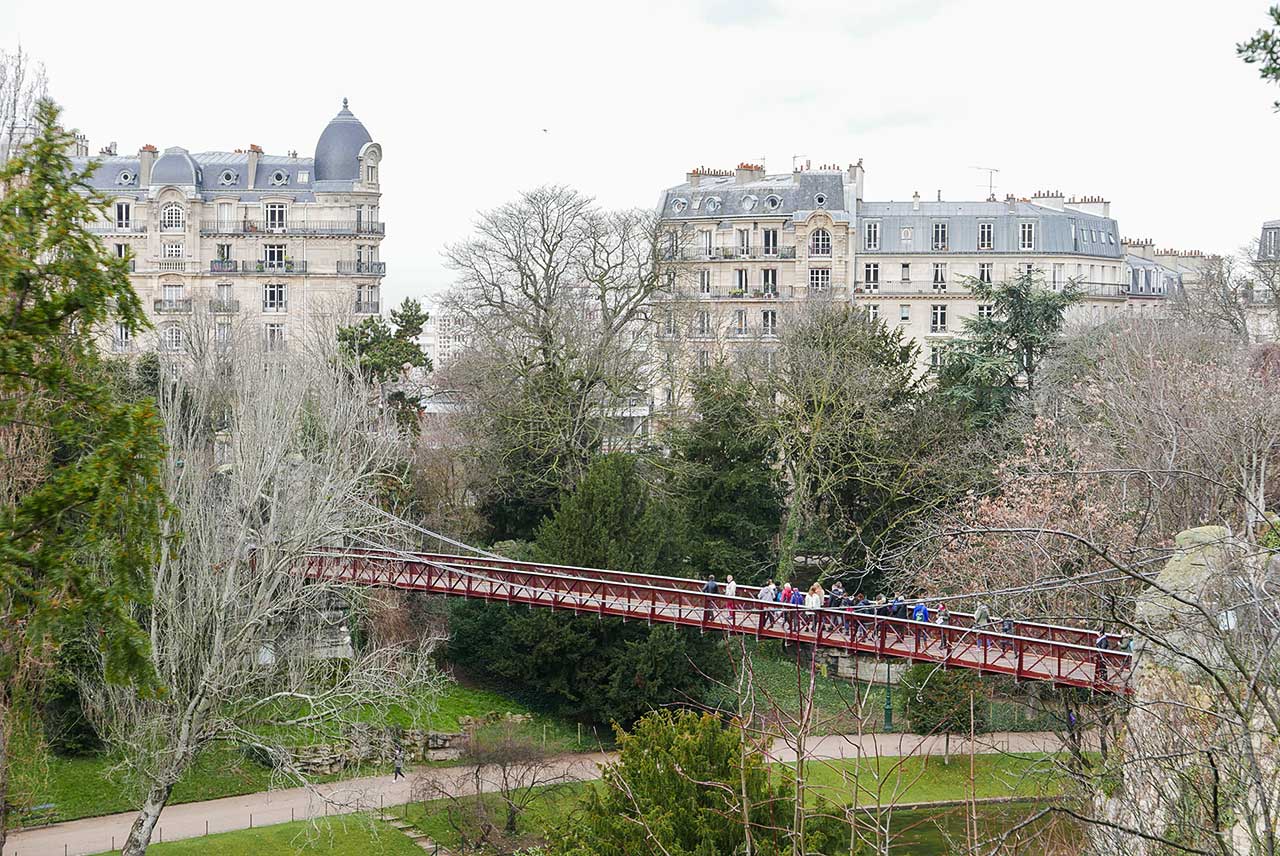Buttes Chaumont

On Thursday, the 28th of January, we went to the “parc des Buttes Chaumont”, in the 19th district of Paris, to explore an example of a biodiversity hotspot in Paris.
This park is the fifth largest in Paris.
From the Revolution to 1860 the area was outside the city of Paris. It was a quarry of gypsium transformed to plaster for construction by heating in ovens. Part of the production was exported to the USA so the neighbourhood used to be called « quartier des Amériques ». Emperor Napoléon III (1852-1870) decided to turn the quarries into a park to provide fresh air and a pleasant promenade to the inhabitants of the expanding city of Paris that included, starting from 1860, Belleville and the Buttes Chaumont. The State bought the field in 1863 and works began the following year directed by an engineer, Jean-Charles Alphand and a gardener, Jean-Pierre Barillet-Deschamps. The huge works lasted for three years from 1864 to 1867 with more than one thousand workers. The park was planned as an English garden style. It includes hills, lake, waterfalls, hoods, meadows in a succession of picturesque viewpoints. The designers wanted to mimic wild nature to prompt the visitor to strolling and dreaming. The conception of this romantic spot of the city was also inspired by Italian countryside paintings of French romantic painters like Fragonard or Hubert Robert. The temple at the top of the belvedere is an interpretation of the Vesta temple of Tivoli.
The park is the richest in Paris in terms of plant species. From 1867 to 1960, France owned a large colonial empire in Asia and Africa. Many trees and plants were imported. We saw old plane trees from Asia. The oldest one was planted in 1862. A cedar of Lebanon dates from 1880. There are beautiful sophora japonica and robinia trees on the shores of the lake. We also spotted sequoias from North America and gingkos bilobas.
